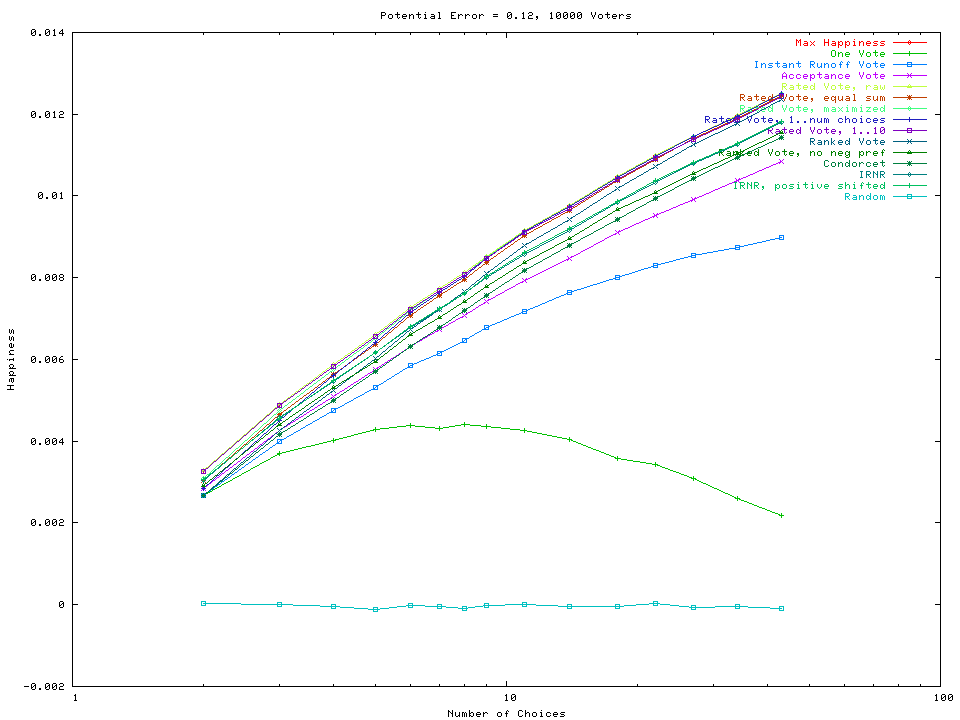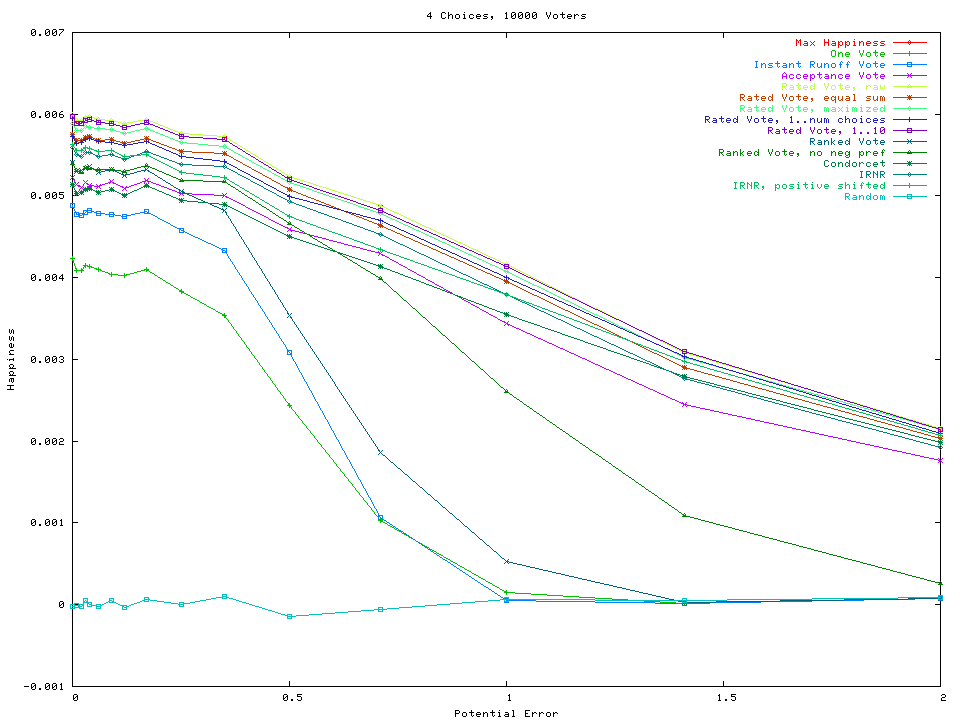
This graph shows how, in general, having more choices available makes the voting populace happier. If there are more candidates, there's a better chance that there's someone everyone will agree on. One Vote and Instant Runoff Vote can't properly take advantage of this. They just become fractured and fall back towards randomness as the number of candidates increases.

This graph shows how as Error increases, election results are degraded. Error may be cumulative of voting machine error, voter confusion or candidate lies. All of these detract from the voters voting for what will make them truely happiest. One Vote followed closely by Instant Runoff Vote are the most sensitive to error and degrade most rapidly. Ranked Vote (Borda Count) was also very sensitive, and interestingly the variation that allows assigning no vote to the candidates a voter doesn't like is less sensitive. I'm not sure why that is.
Condorcet generally degraded more slowly, but didn't start off as high and so did not catch up until the error level was really quite high. But, as we saw in the first graph, Condorcet can also pull ahead when there are many candidates.
It's hard to say, but I estimate that the cumulative error in our current system is less than 0.5, perhaps about 0.1 to 0.2 .
back to bolson's advanced voting main

